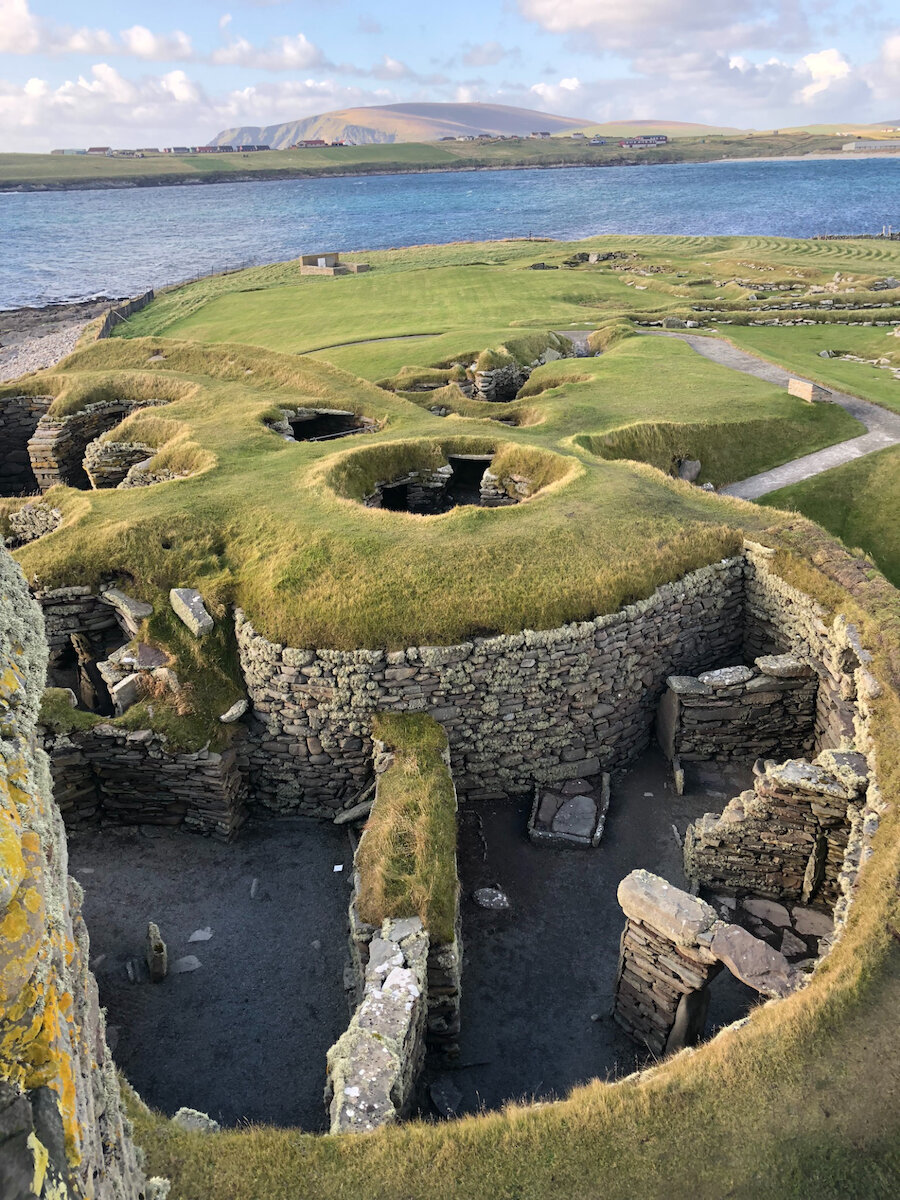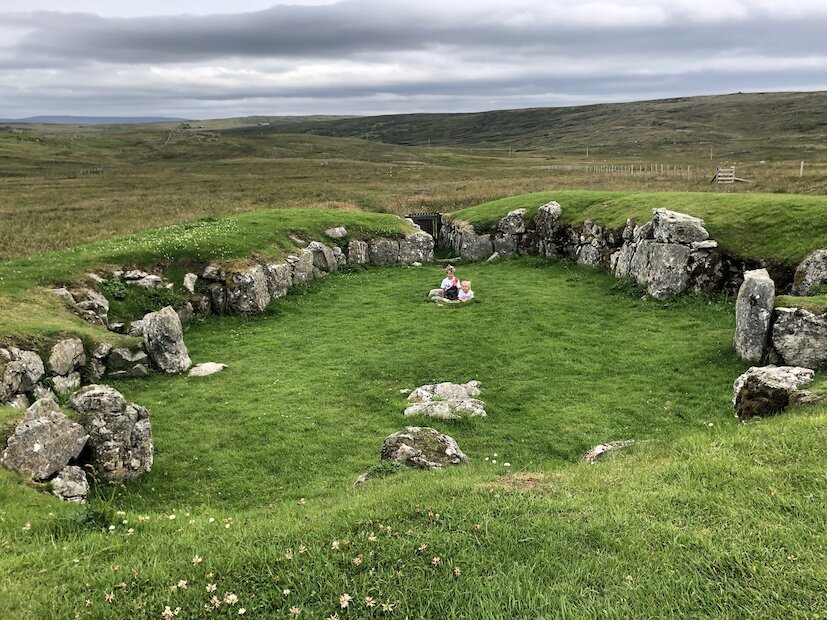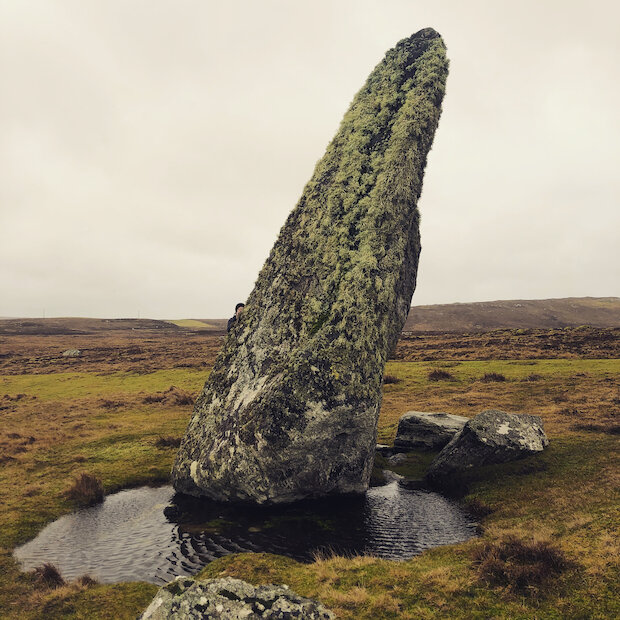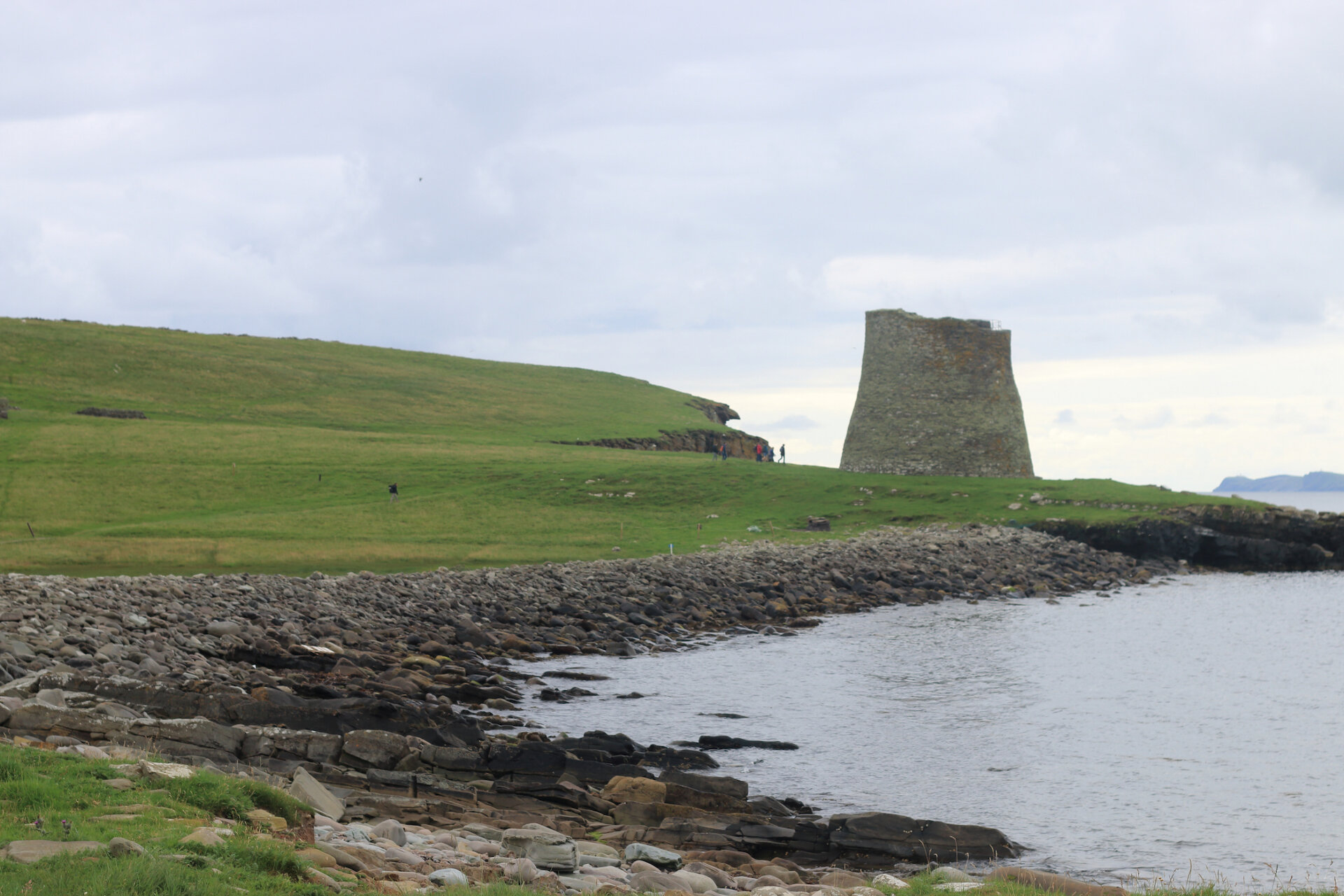Start your historic tour by exploring and understanding Shetland’s full human story. The best place to begin is at the Shetland Museum & Archives, where you can explore their fascinating archaeological displays and get an idea of what life looked like to Shetland’s early settlers.
Mesolithic Shetland
Shetland has been permanently inhabited since Neolithic times (4-6,000 years ago) although people have been using the islands’ since Mesolithic times.
The first hunter-gatherers are believed to have arrived from the north of Scotland, crossing the Pentland Firth and the North Sea in small open boats; boats formed by stretching animal skins over simple wooden frames.
West Voe beach (pictured above) on the southern tip of Shetland’s South Mainland is the best place to get a sense of Mesolithic Shetland. In 2002, archaeological excavations revealed a Late Mesolithic shell midden at the beach. In simple terms, a shell midden is a rubbish heap; the detritus of human activity that provides archaeologists with vital clues about how hunter-gatherers lived and, more importantly, when they arrived. Radiocarbon dating revealed that the midden dates back some 6,000 years, making it the first Mesolithic site to be discovered and dated in Shetland, allowing a glimpse into the lives of the early hunter-gatherers in Shetland.
Jarlshof Prehistoric and Norse Settlement is your next stop into discovering Shetland's past. This is one of the most important, and largest, multi-period sites in Europe, boasting an almost uninterrupted occupation from the first Neolithic farmers right up until the 1600s when the Stewart Earls ruled.




